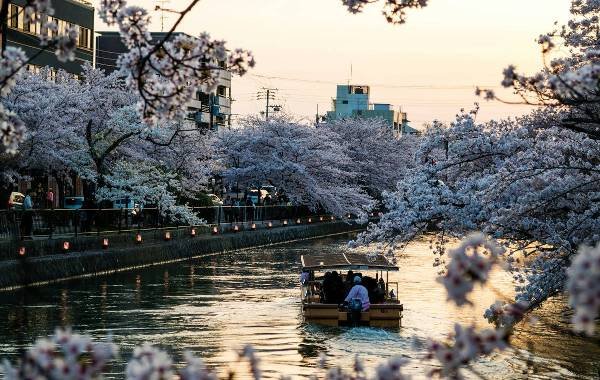
tea ceremony in kyoto – japan
Authentic Kyoto Tea Ceremony – A Complete guide for 2025
Imagine stepping into a world where time seems to stand still. The door opens, and you’re greeted by calm tatami mats. You hear the soft sound of water and smell fresh matcha. This is the Kyoto tea cermony, a special Japanese tradition that you can try when visiting the country.
Chanoyu means the way of tea and here we will learn how to honor the harmony, respect, purity, and peace of this amazing experience.
My name is Shannon 🙂
I have been travelling full time for the last decade. I have seen and experienced the most wonderful and mysterious things and incredibly excited to share these adventures with you. I thank my lucky stars that i have found myself in a position that I can give you all the tips and tricks needed for a seamless trip. So pack your bags and lets go!
Affiliate Disclosure: Some of the links on our site are affiliate links, meaning, at no additional cost to you, we may earn a commission if you click through and make a purchase. This helps us to continue providing valuable content and supports our efforts in bringing the travel community together. We only recommend products and services we believe in and think you’ll find useful. Complete details are included in our affiliate disclaimer. Thank you for your support!
In a Hurry? Here's our Key Info for This Article
- The authentic Kyoto tea ceremony experience celebrates the purity of matcha and the beauty of Japanese culture.
- Both formal and informal ceremonies create unique opportunities for connection and reflection.
- The captivating history of tea in Japan dates back to the 12th century with the arrival of tea leaves.
- Wabi-sabi aesthetics play a crucial role in designing both the tea utensils and the ceremony itself.
- Participation in the tea ceremony fosters respect for tradition and mindfulness in daily life.
Must-Visit Attractions
Fushimi Inari Shrine
Fushimi Inari Shrine is a significant cultural site located in Kyoto, Japan. It is famous for its thousands of vermilion torii gates, which create scenic trails up the sacred Mount Inari. These gates are donations from individuals and businesses, reflecting a tradition of giving thanks to the deity Inari, who is associated with rice and prosperity. The shrine is accessible all year round, with Fushimi Inari Shrine opening hours being 24/7, allowing visitors to explore at their own pace. The main shrine structure dates back to 711 AD, although it has been rebuilt multiple times over the centuries. Visitors can start their journey at the base of Mount Inari and follow winding paths that lead through the torii gates. The entire hike takes about 2-3 hours, providing panoramic views of Kyoto along the way. Public transportation options like trains and buses make it easy to reach Fushimi Inari Shrine from various parts of Kyoto.
Kinkaku-ji
Kinkaku-ji, also known as the Golden Pavilion, is one of Kyotos most famous landmarks. Located in the northern part of the city, this Zen Buddhist temple is renowned for its stunning architecture and serene setting. The top two floors of the pavilion are covered in gold leaf, creating a striking reflection on the surrounding pond. Visitors can explore the beautifully landscaped gardens that offer a peaceful atmosphere perfect for relaxation and meditation. For those seeking Kinkaku-ji travel information, its important to note that the temple is open year-round, with varying hours depending on the season. Admission fees are required, and it can get crowded during peak tourist seasons. To enhance your visit, guided tours are available in several languages. The site is easily accessible by public transportation, making it a convenient destination for tourists exploring Kyoto.
Arashiyama Bamboo Grove
The Arashiyama Bamboo Grove in Kyoto is a popular natural attraction known for its towering bamboo stalks that create a serene and picturesque setting. Visitors can stroll along the well-maintained paths, enjoying the peaceful atmosphere and the gentle rustling of bamboo leaves. The best time to visit is early morning or late afternoon to avoid crowds and enjoy the tranquil environment fully. Arashiyama Bamboo Grove opening hours are typically from dawn to dusk, allowing visitors ample time to explore throughout the day. Located in the western outskirts of Kyoto, the grove is easily accessible by public transportation. Its about a 10-minute walk from Saga-Arashiyama Station on the JR Sagano Line. Nearby attractions include the historic Tenryu-ji Temple and the scenic Togetsukyo Bridge, which are worth visiting while in the area. Note that there is no entrance fee for the bamboo grove, making it an affordable option for travelers looking to experience Kyotos natural beauty.
Stay Connected
Things to Do
Essential Apps
Surfshark VPN
Stay safe online and continue accessing all your services just like back home.
Budget Tips
Understanding the Japanese Tea Ceremony
The Japanese tea ceremony is more than drinking tea. It’s a deep practice that brings peace and focus. It has a long history, starting in the 12th century. It became a fine art by the late 1500s, thanks to Sen no Rikyū. This ceremony lets you see the beauty and wisdom behind it.
The Origins and History of Tea Ceremony
Buddhist monks first brought tea to Japan for health reasons. Over time, it grew into a beloved tradition. It became a big part of Japanese culture. The ceremony evolved during the Kamakura and Muromachi periods. It was shaped by samurai culture and temple beauty. This history makes the tea ceremony very special.
Principles of Chanoyu Tradition
The ceremony follows key principles: wa (harmony), kei (respect), sei (purity), and jaku (tranquility). These values make every moment important. They teach patience, care, and attention to detail. By participating, you connect with Japanese culture and mindfulness. It’s a unique experience.
Wabi-Sabi Aesthetics in Tea Ceremonies
Wabi-sabi is key in the ceremony. It values beauty in imperfection and simplicity. It teaches us to appreciate life’s fleeting moments. The tea room and tools show this philosophy. They help you see the beauty in the ceremony. This way, you can truly enjoy and understand Japanese culture.
Experience the Kyoto Tea Ceremony Experience
The Kyoto tea ceremony invites you into a world of tradition. There are many types of ceremonies, each with its own style and theme. You can choose from simple temple ceremonies to grand ones with kaiseki cuisine. The setting is charming, with everyone sitting on tatami mats. This makes the experience even more special. Going to Kyoto is a once in a lifetime, so also remember to book the right accommodation in Kyoto close to you ceremony to avoid walking long distances.
Overview of Different Types of Tea Ceremonies
In Kyoto, you can find many tea ceremonies to enjoy:
- Chakai: A casual event where you can enjoy tea and sweets.
- Chaji: A formal event lasting hours, often with a full kaiseki meal.
- Simple Ceremonies: Held at temples like Nanzen-ji and Shoren-in, these cost about 500 yen.
- Private Sessions: Places like Maikoya Kyoto offer private ceremonies with geisha performances and sweet-making.
There’s a ceremony for everyone, no matter your taste or schedule.
Seasonal Variations and Their Significance
Seasonal tea events make the Kyoto tea ceremony even more special. Each season brings its own theme and flavors:
- Spring: Cherry blossoms and sakura-flavored sweets are common.
- Summer: Refreshing teas and light treats are served, celebrating the warmth.
- Autumn: Maple leaves and fall teas are the focus, highlighting the earthy flavors.
- Winter: Cozy teas and sweets create a warm atmosphere.
These seasonal changes add beauty to the ceremonies. They also connect us to Kyoto’s ever-changing landscape. You can look into doing a cherry blossom tour while in Japan. Tokyo offers a fantastic cherry blossom tour.


Top Locations for an Authentic Kyoto Tea Ceremony
Kyoto is the heart of the Japanese tea ceremony. It offers many places for you to enjoy this cultural experience. Each place has its own charm, making it perfect for learning about tea. For those travelling to Kyoto and looking for more things to do, then this great Kyoto travel guide from the folks over at JoynToyko is worth checking out.
Flower Teahouse in Higashiyama
The Flower Teahouse is in Higashiyama. It mixes culture with beautiful views. It’s near famous temples and shrines, making your visit special.You can pick from shared or private tea ceremonies. Prices start at 4,000 yen for shared and 8,000 yen for private. You can also wear a kimono for 6,000 yen more.
Garden Teahouse Near Ryoan-ji
The Garden Teahouse is by Ryoan-ji temple. It’s peaceful, perfect for private tea ceremonies. Private sessions cost 12,000 yen per person.For a single person, it’s 20,000 yen. Kids under 6 get in free. This lets families enjoy the tradition together.
Camellia Tea Ceremony Experience
The Camellia Tea Ceremony offers a special experience. You’ll get expert guidance on tea making. It’s a chance to learn the tradition’s details.
Tea Experiences in Uji
Uji is famous for its tea culture, just outside Kyoto. Uji tea experiences let you try high-quality teas. You can find unique programs like the Samurai Spirit Tea Ceremony. Uji adds to your cultural journey. It’s a memorable part of your visit to Kyoto.
The Art of Matcha Preparation
Matcha preparation in a tea ceremony mixes tradition and focus. It uses special tools and a precise method. This makes the perfect cup of matcha.
Tools and Utensils Used in the Ceremony
The Kyoto matcha process needs special tools. These tools make matcha preparation both useful and beautiful. Key tools include:
- Chasen – A bamboo whisk for frothing matcha powder.
- Chashaku – A bamboo scoop for the right matcha amount.
- Chawan – A tea bowl for mixing and drinking matcha.
Each tool is crucial. They make sure matcha preparation is both efficient and respectful of tradition.
Step-by-Step Matcha Preparation Process
Learning to prepare matcha is a mindful journey. It involves careful steps:
- Start by getting your tea tools ready and setting up your space.
- Use the chashaku to measure about 2 grams of matcha powder.
- Put the matcha powder in the chawan.
- Heat water to 80°C (176°F). Don’t boil it to avoid bitterness.
- Pour a little hot water into the bowl with matcha.
- Whisk the mix in a zig-zag motion with the chasen until it’s frothy.
- Drink your matcha and enjoy the moment and taste.
The Kyoto matcha process turns drinking tea into a calming experience. It lets people connect with the tea and the now.


Zen-Inspired Hospitality
Going to a Kyoto tea ceremony is more than just tasting matcha. It’s looking into a world of tradition and etiquette. Wearing a kimono is a big part of this, linking you to the ceremony’s heritage. It also makes the experience more special. The mix of Zen hospitality and ceremony grace makes everyone feel welcome. It’s a unique and beautiful experience and if you’re a solo-female traveling to Japan, let me assure you it is completely safe.
Kimono Wearing During the Ceremony
At the kimono tea ceremony, you wear traditional clothes, like kimonos. These kimonos show respect for the culture. They add beauty to the ceremony’s calm atmosphere. When you wear a kimono, you connect with Japan’s rich history. It’s a way to honor Kyoto’s tea traditions. To capture you n your traditional gown, i suggest bringing a camera along to show your friends and hold memories.
Tea Ceremony Etiquette and Rules
Knowing the tea ceremony’s etiquette is key. It makes your experience better. Here are some important rules:
- Greet your host with respect when you arrive.
- Thankfully accept and drink the tea you’re offered.
- Turn the tea cup clockwise before drinking to show thanks.
- Stay focused during the ceremony to enjoy it fully.
- Talk politely with others to make the experience more special.
Interactions and Bonding Between Host and Guests
The Kyoto tea ceremony is about more than just watching. It’s about connecting with others. This is based on the idea of “once in a lifetime,” valuing every meeting. Through talking and sharing moments, you make new friends. This peaceful setting makes the Zen hospitality even more special. Please also note the tipping culture in Japan as the country does not accept tips like in the west, this will help you decide if you would to tip your guide after the ceremony, so you aren’t left in an awkward situation.
| Practice | Description |
|---|---|
| Kimono Wearing | A traditional garment that enhances the ceremonial experience |
| Tea Etiquette | Guidelines for respectful participation and enjoyment of the ceremony |
| Host-Guest Interaction | Encourages connections and meaningful exchanges |
Conclusion
Going to a real Kyoto tea ceremony is more than drinking tea. It’s a deep dive into Japanese culture. Many people book these ceremonies well in advance. They want to experience this ancient tradition. Places like Tea Ceremony Koto get great reviews. They have a 4.3 rating from over 1230 reviews. This shows people love these experiences. You can choose from public or private sessions, even ones by candlelight. When you join, you’ll see how carefully matcha is made. You’ll feel the calm that shows respect and kindness. Most people learn a lot about Japanese culture here.
They say it helps them understand Japanese traditions better. This shows how much people value this art form. It helps them see the beauty in Japanese ways.The Kyoto tea ceremony is about sharing special moments. It shows how important every moment is. Drinking matcha and eating Japanese sweets brings peace and focus.This experience creates memories that last forever. It connects you to Japan’s history. Your visit will be filled with real appreciation for tea and Japanese culture.
Kyoto Tea Ceremony FAQ
An authentic Kyoto tea ceremony on your travels in Japan includes matcha preparation. An experienced host guides you in a traditional teahouse. Guests enjoy seasonal sweets and may wear a kimono.
Tea ceremonies can last from 1 to 4 hours. Informal gatherings are about 1 hour. Formal ones with kaiseki cuisine can last 4 hours.
No, you don’t need to bring your own utensils. The teahouse provides everything like the bamboo whisk and tea bowl.
Be respectful to the host and guests. Drink tea gracefully and avoid distractions. Turn the cup before drinking to show thanks.
Yes, you can customize your experience. Choose private ceremonies or special themes. You can also wear a kimono for a deeper cultural experience. After your tea ceremony, I also suggest going to some other sights around the city as Kyoto is full of them!












